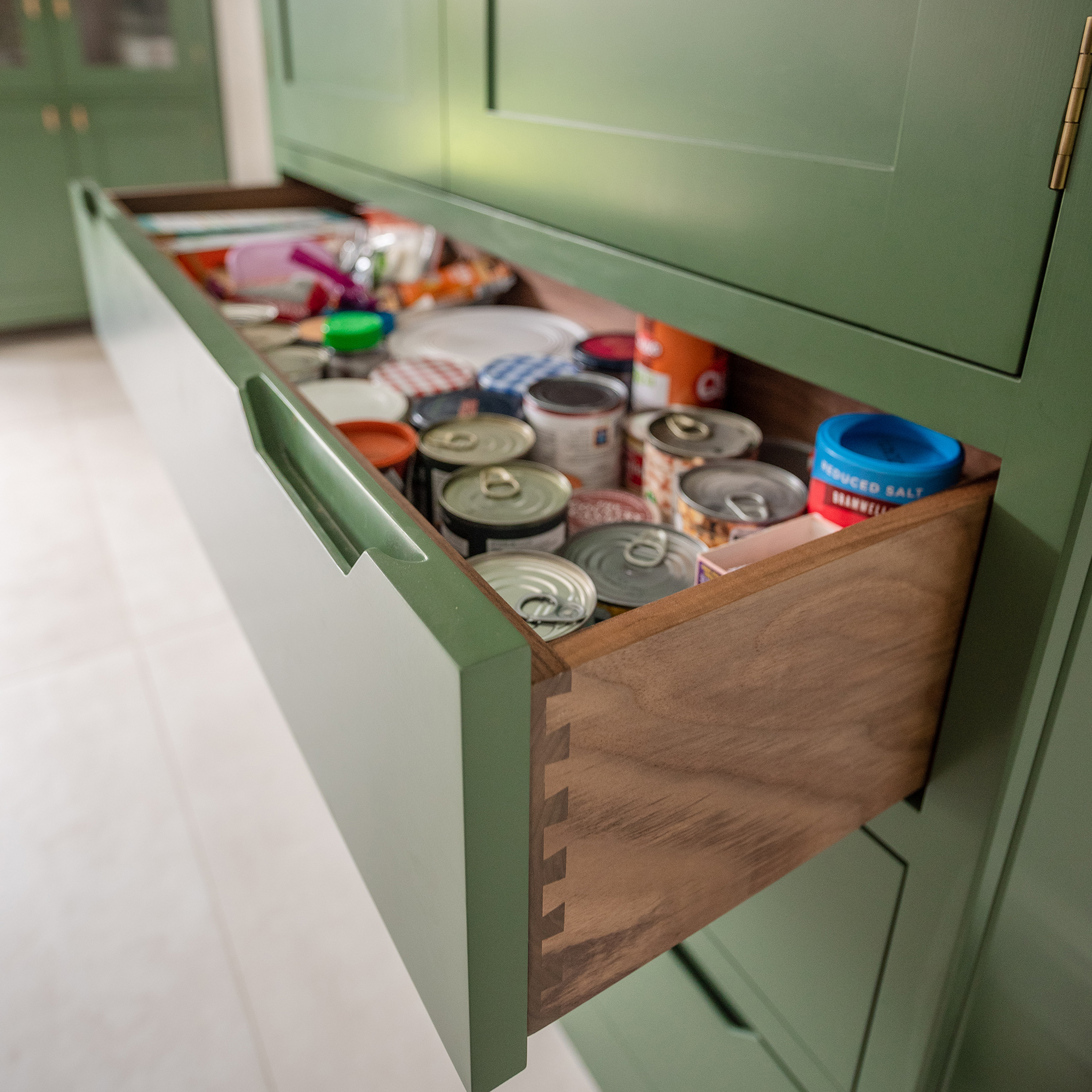
Kitchen cabinets can quickly turn to chaos. Especially if you can’t resist buying new kitchen supplies, or like to keep stock of your kids' favourite snack - we get it - they can easily overflow and become disorganised. We open our cupboard doors daily to grab a plate, oven dish, drinking glass or whatever else, which is why these kitchen cabinet organisation rules will keep them in check.
Of course, it’s not just kitchen utensils we keep in our cabinets, but pantry foods, spices and cleaning supplies too. Organising your kitchen cabinets can allow for a streamlined cooking session and an easy clean-up afterwards. Keeping them clean and clutter-free is the secret to a calm and harmonious space.
Whether you’ve got a large kitchen, small cooking space or something in between, there are plenty of kitchen ideas to get your organisation session started. You may need to begin by coming to the realisation you have enough cute coffee cups and can stop bulk-buying pasta sauce. But then, keeping your kitchen cabinets in their best shape is as simple as following a few rules.
Kitchen cabinet organisation rules to follow
With the help of organisation experts and interior designers, we’ve sourced 8 tips to get your kitchen in working order. There are kitchen storage ideas, including what to store and where, as well as clever configurations to keep your stock in check.
1. Declutter

‘The secret to a well-organised kitchen starts with decluttering’ states Ava Wilson, professional organiser at Unclutterer.
‘It’s like priming a wall before painting it - you’ll have a much better finish, and save yourself time.’ Start by taking everything out of your cabinets. You’re likely to find food items you had forgotten about, including those that are probably past their sell-by dates, and kitchen accessories you rarely use.
‘This is the best time to clear out your cupboards and minimise wasted space to ensure every inch of your kitchen has its use’, adds Wilson.
2. Categorise by cupboard

Categorising your items into different cupboards is essential for an organised kitchen space. Grouping according to use such as keeping your baking supplies together, herbs and spices in one spot and everyday dishes in another not only makes it easier to find what you need but also for keeping track of what you have.
3. Zone kitchen cabinets

There are many different kitchen layout ideas, so it’s important to store each category of items in the areas that suit your space. Christmas crockery for example should be kept on top shelves that are hard to reach. Everyday essentials are best kept at eye level for easy access. Keep cookware like pots and pans close to the hob, as well as cutlery you pick up every day in the top drawers.
Interior Designer Rebecca Fisher’s rule when it comes to zoning is to think about ‘proximity to appliances - place items near the appliances they require to function. Store mugs near kettles, pots and pans near hobs, and ensure cabinets containing dishes are within arm's distance to the dishwasher.’
4. Maximise on all cabinet space with clever storage solutions
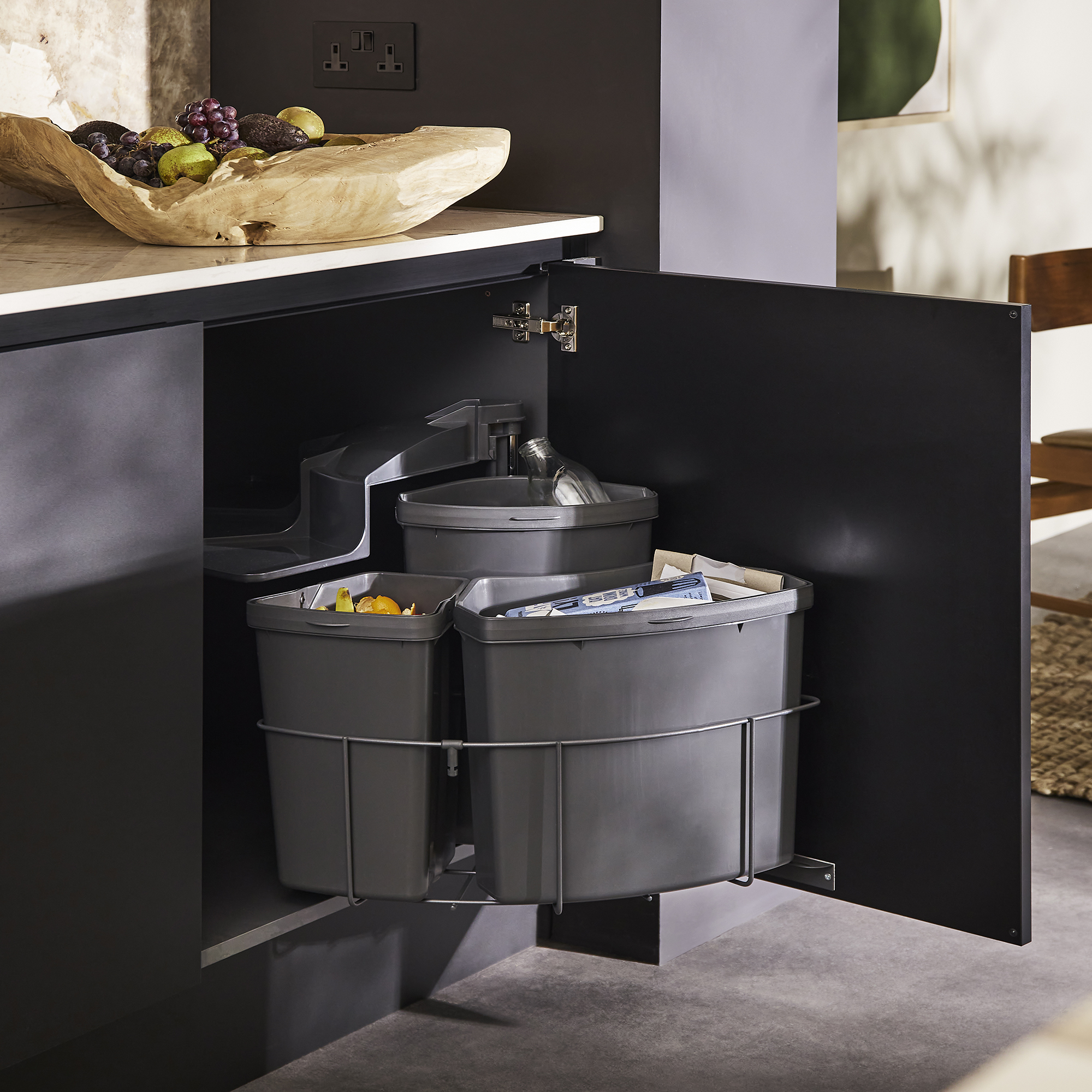
Kelly Collins, Head of Creative at Swyft’s top tip is to ‘make use of all the height you can.’ Kitchen cabinets can be high and the top shelves can often go unused due to difficulty in reach. But you should still make the most of the space.
‘Tirered inserts, lazy susans and stackable containers are all affordable storage solutions to maximise on space within your cabinets’, adds Rebecca. Shelf dividers, pull-out drawers and hooks you can attach to cupboard doors are great for small kitchen ideas too.
5. Choose transparent storage
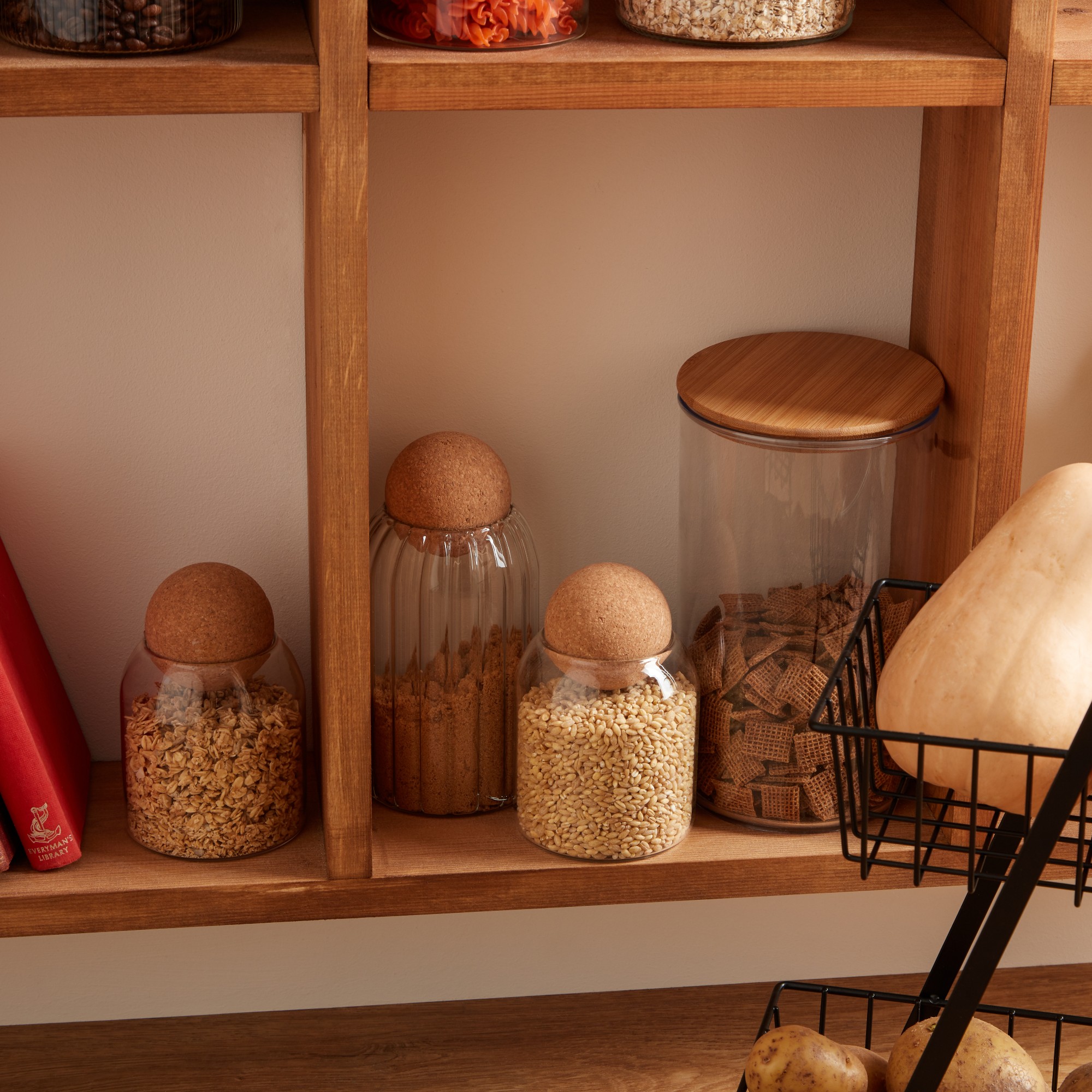
Transparent containers, whether it’s to decanter your dried foods, or to store your tins, cans and jars are ideal. You can see exactly what you have in your cabinets and they can help your shelves look neat and organised.
If you want a more eco-friendly and cost-effective option Rebecca recommends ‘repurposing old jars’. But make sure they’re of the right capacity. ‘Ensure each container can hold the volume of what you want to store - otherwise, you’ll end up with half-empty bags of flour and the leftover ends of packets of pasta.
6. Place in order of priority
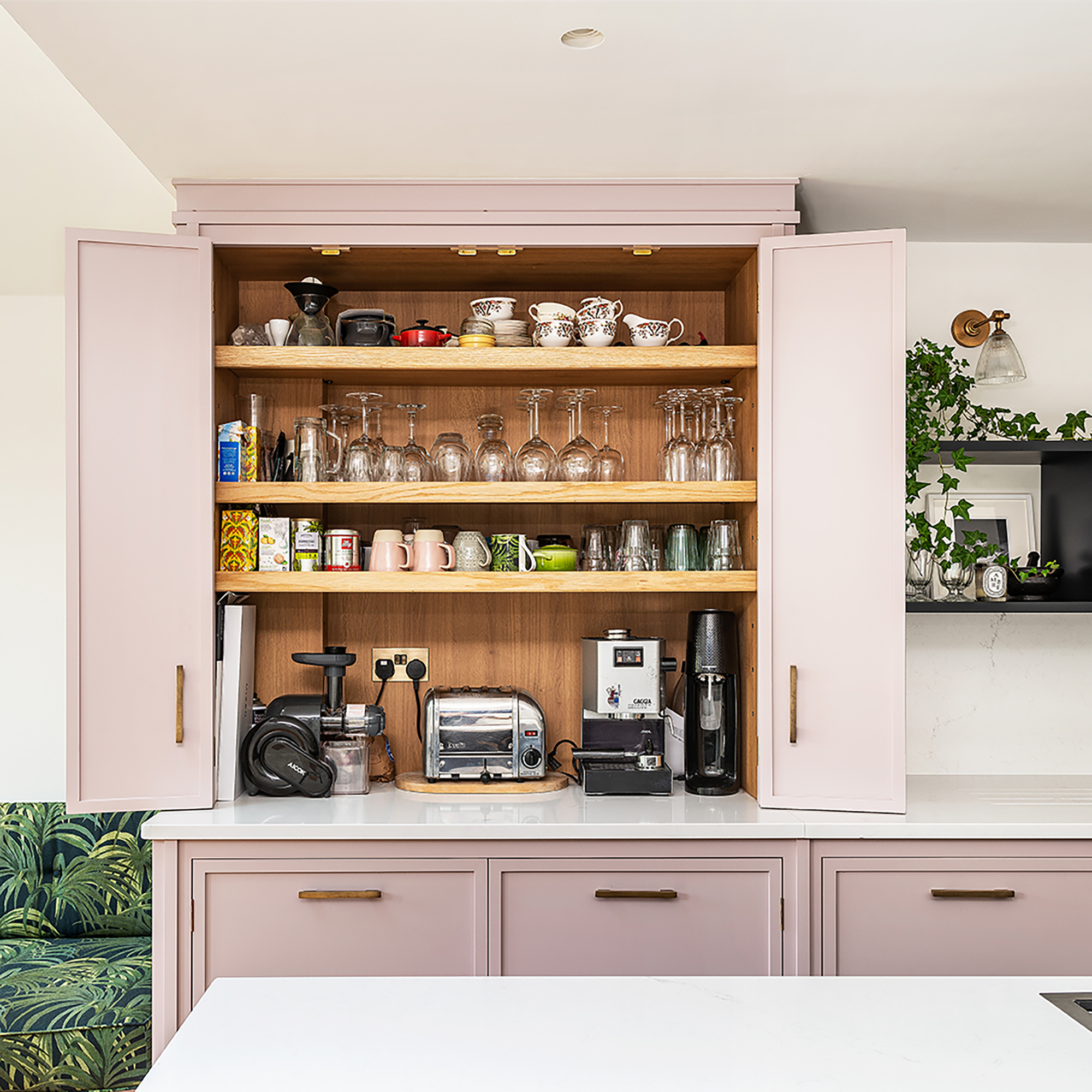
When packing your items into kitchen cabinets, Rob Falconer, head of range at ProCook states you should ‘organise them in order of need.’ You should put the most frequently used items at the front, and less used items at the back of the cupboard. There’s no point wrestling with the le creuset you only use on special occasions to find your everyday saucepan.
If this cabinet is one filled with pantry goods, treat it like a stock rotation. Keep products with the earliest sell-by date at the front, and those with a longer shelf life at the back - ‘you’ll thank yourself later!’.
7. Make use of high and low cabinets

If the shape of your kitchen means you have high-up cabinets or drawers so low they’re difficult to reach, it shouldn't mean you disregard the potential cupboard space. There are lots of kitchen layout ideas that mean you might have a corner cupboard or an island fit with cabinets.
Francesca Harris, interior designer and founder of Francesca Harris Design suggests, ‘Having your glassware and plates in a higher cabinet makes it easier to put them away after use, whereas pots and pans should be in lower cupboards, ideally near the cooker. Nest the pans inside each other and store lids vertically to make the most out of your space.’
8. Glass-fronted cabinets? Save them for your glassware
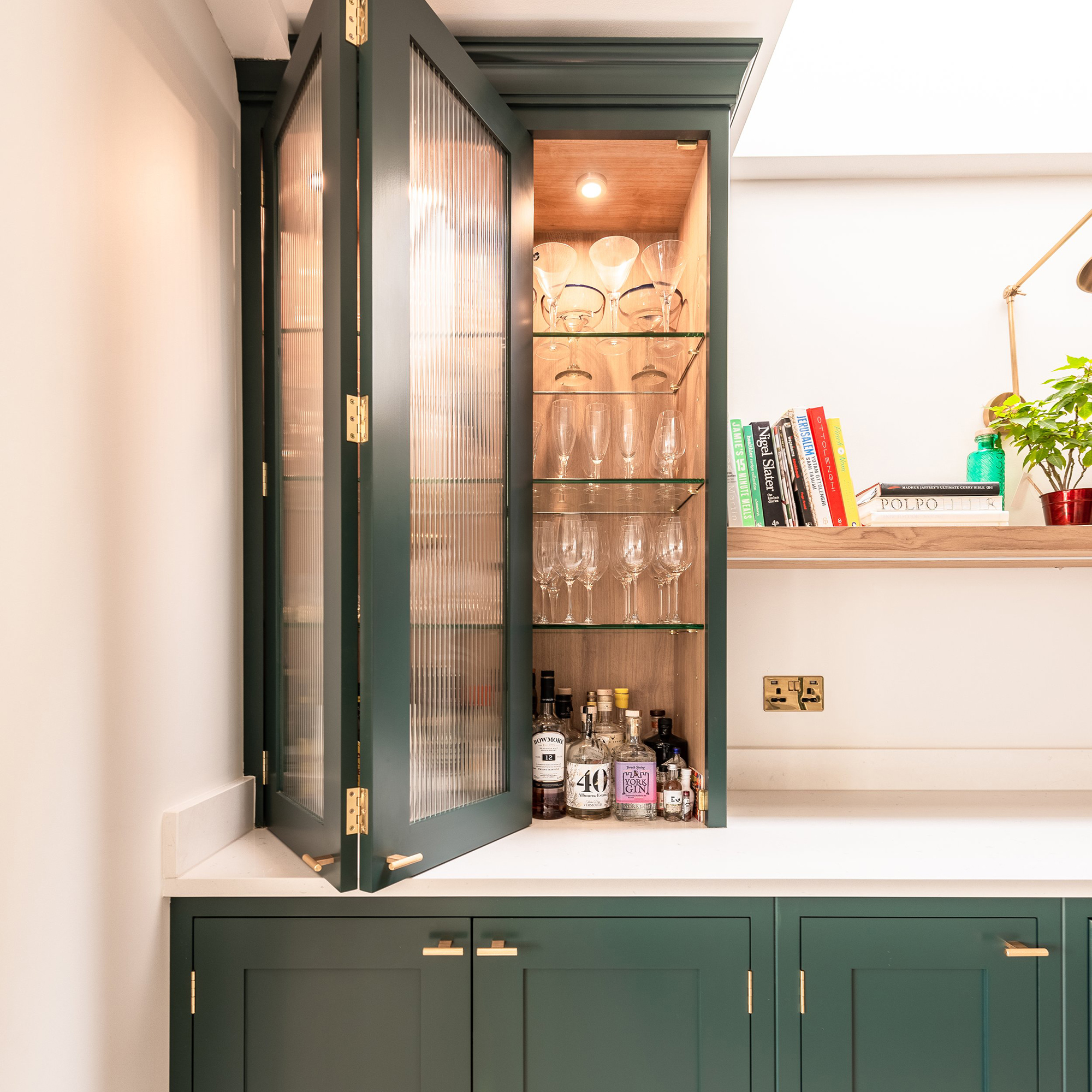
Keeping kitchen appliances (unless it’s a beautiful Smeg blender, obviously), pantry foods and everyday utensils away from glass-fronted cabinets, or open shelving will help your space feel tidier. Having un-pleasing items to the eye on display can easily make your space look cluttered.
Rebecca Fisher says ‘glass-fronted cabinets should ironically be saved for glassware. Display those delightful artisan pieces that bring joy every time you see them,’ - you’ll soon find yourself enjoying your kitchen space a whole lot more.
FAQs
What should you store in kitchen cabinets?
'Some items work better stored in kitchen cabinets’, rather than drawers, for example, says Francesca Harris, interior designer and founder of Francesca Harris Design. Any cookware you need close to hand, like crockery, cooking appliances and glassware should be kept in cabinets. Cutlery and other household essentials like kitchen foil, freezer bags and even tea towels and other linens can be kept in drawers. Deciding which items to store where can be based on shape and ease of access.
But what you store in kitchen cabinets can be based on aesthetic appeal. Sarah Ross, co-founder of Addison Ross, says you can ‘hide kitchen utensils like the food processor, tupperware and less beautiful saucepans in the kitchen cabinet, while pretty salt and pepper shakers can take pride of place on the kitchen island.’
Are kitchen cabinets better than drawers?
'When it comes to successful storage, a balance of drawers and cabinets is key.’ says Tom Howley, Creative Design Director at the eponymous kitchen company. Grouping and positioning relevant items accordingly in either cabinets or drawers can help create defined areas for prepping, cooking, serving and clean up. ‘Pots, pans and glassware can be organised in kitchen cupboards, and linens and dishes can stay in drawers nearest to the dining table. Utensils should go in the nearest drawer next to the hob’.
How to maximise storage in a small kitchen
‘Making the most of what you have is all the more important in a smaller kitchen’ states Francesca Harris. ‘Pull out shelves in your cabinets, especially corner cabinets will help you store more items, and be able to see and access everything easily.’
Another small space tip is to store things vertically, rather than horizontally. ‘Chopping boards and baking trays are better standing up, than lying down. Use try dividers to help’, advises Harris. ‘And don’t forget your walls - mounting pans on the walls can save you a ton of cupboard space, and look lovely.’







